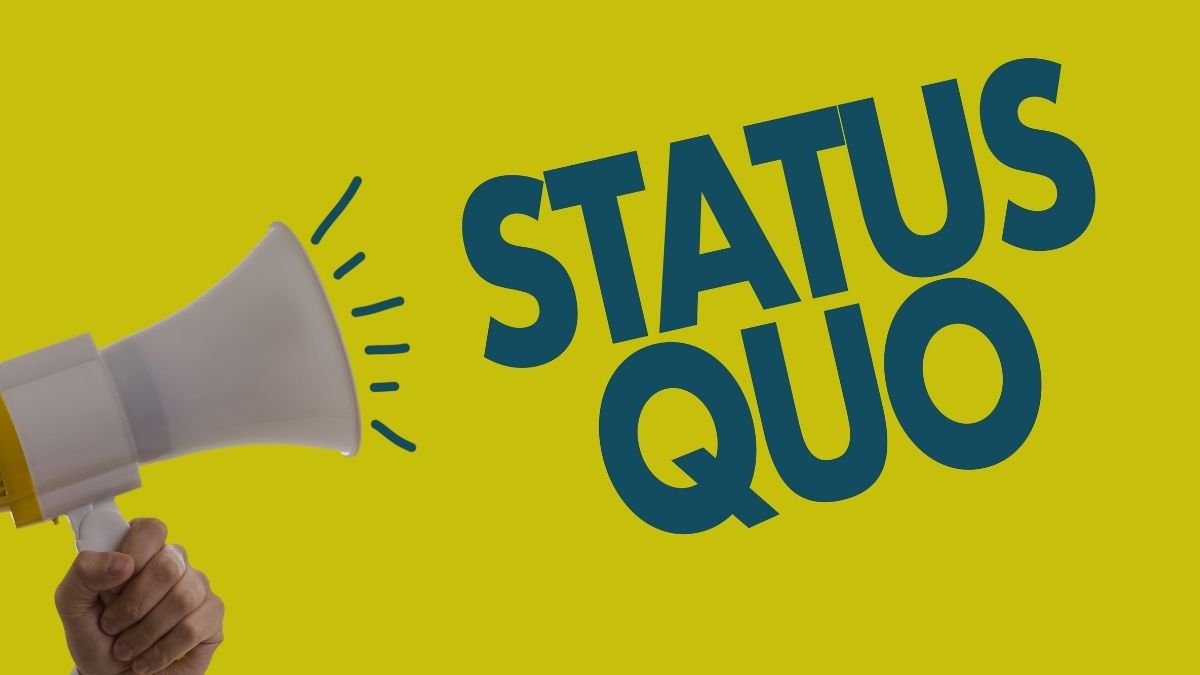
Money management is a cornerstone of personal well-being, yet it’s fraught with psychological pitfalls that can trip up even the most well-intentioned among us. Did you know that a staggering 65% of Americans are ensnared by these mental traps, leading to financial decisions they later regret?
These traps aren’t mere minor missteps; they’re deeply rooted in human psychology and can significantly impact your journey toward financial freedom. From the fear of loss that paralyzes investment decisions to the allure of instant gratification that depletes savings, these biases are woven into the fabric of our financial behaviors.
But fear not—by understanding these traps and equipping yourself with practical strategies, you can navigate your financial landscape with clarity and confidence.
Loss Aversion Trap
Loss aversion is a powerful bias where the pain of losing outweighs the pleasure of gaining. This can make us overly cautious, causing us to miss out on opportunities for growth. For instance, you might keep your savings in a low-interest account to avoid market volatility, only to see it barely grow over time.

Research shows that the pain of losing $100 is twice as strong as the pleasure of gaining $100, leading many to hold onto losing investments, fearing further losses. During the 2008 financial crisis, numerous investors held onto stocks that continued to plummet. Those who sold their losing stocks and reinvested in better-performing assets fared better in the long run.
To avoid this trap, embrace calculated risks by educating yourself on investing principles. Focus on long-term trends rather than short-term fluctuations. Remember that some risk is necessary for reward. Diversify your portfolio to mitigate losses from individual investments.
Sunk Cost Fallacy Trap
The sunk cost fallacy is when you continue to invest in a decision because of prior investments, despite evidence it’s no longer viable. Imagine investing in a startup that’s struggling. You keep pouring money into it, thinking, “I’ve already put so much in.” This is the sunk cost fallacy.

Research by Daniel Kahneman and Amos Tversky found that people often make irrational decisions based on sunk costs. For example, many continue to fund failing projects despite clear evidence they won’t succeed.
To avoid this, regularly assess your investments and be willing to cut your losses. Don’t let past investments dictate your future decisions. If something isn’t working, move your capital to better opportunities.
Present Bias Trap
Present bias is the tendency to prioritize immediate rewards over long-term benefits. This can lead to impulsive spending and inadequate saving.

A survey by the Employee Benefit Research Institute found that over 50% of Americans have less than $1,000 in savings, often due to present bias. To combat this, practice delayed gratification by implementing a cooling-off period for significant purchases.
Automate your savings to ensure a portion of your income is allocated to future goals. Visualize your long-term objectives to stay motivated.
Overconfidence Trap
Overconfidence can be dangerous, especially in financial matters. It’s the belief that you know more than you do, leading to excessive risk-taking. A study published in the Journal of Finance found that overconfident investors tend to trade more frequently and achieve lower returns.

During the dot-com bubble, many investors were overconfident in the market’s growth, leading to substantial losses when the bubble burst. Recognize the limits of your knowledge. Seek advice from financial professionals and conduct thorough research before making decisions. Diversify your investments to spread risk.
Bandwagon Effect Trap
The bandwagon effect is when you make decisions based on what others are doing, rather than your own research. This can lead to following trends or herd mentality. During the 2021 meme stock craze, millions joined the trend, driven by social media. Many bought GameStop and AMC shares without understanding the risks, only to see prices crash.

Develop your own financial strategy based on your goals and circumstances. Be skeptical of get-rich-quick schemes and stay informed about market trends. Trust your own judgment and don’t be swayed by the crowd.
Mental Accounting Trap
Mental accounting is when you assign different values to money based on its source or intended use. For example, you might spend windfall income more freely than earned income or keep high-interest debt while holding onto emergency funds.

Research by Richard Thaler shows that people are more likely to spend windfall income frivolously. Adopt a holistic approach to money management. Treat all your money as part of a single financial pool and make decisions based on what’s best for your overall situation. Establish clear financial goals and allocate resources accordingly.
Scarcity Trap
The scarcity trap is when you make rushed decisions due to a perceived scarcity of resources or opportunities. Retailers often use “limited stock” or “exclusive” labels to create a sense of urgency.

A study published in the Journal of Consumer Psychology found that scarcity messaging can increase purchase likelihood by 33%. Take time to research and evaluate options before making decisions. Question whether the scarcity is real or manufactured. Focus on your needs rather than being swayed by marketing tactics.
Anchoring Trap
The anchoring trap is when you rely too heavily on the first piece of information you encounter. This can lead to overvaluing or undervaluing assets. A study by Northcraft and Neale found that negotiators often anchor on the first price mentioned and adjust insufficiently from that anchor.

Be aware of the anchoring bias and actively seek additional information before making decisions. Research market values, compare multiple options, and get independent assessments when necessary.
Confirmation Bias Trap

Confirmation bias is when you favor information that confirms your existing beliefs while disregarding contradictory evidence. A study published in the Journal of Behavioral Finance found that investors with confirmation bias tend to underperform the market.
Actively seek out diverse perspectives and information sources. Challenge your assumptions and be open to revising your views in light of new evidence. Consult with financial professionals who can provide objective insights.
Status Quo Bias Trap
The status quo bias is a preference for maintaining the current state of affairs rather than making changes. A survey by The Ascent found that 40% of Americans haven’t reviewed their investment portfolios in the past year.

Regularly review your financial situation and be willing to make changes when necessary. Set up periodic check-ins to assess whether your financial products and strategies are still meeting your needs. Don’t be afraid to switch to better options based on changing circumstances.
How to Calculate the Risk?
Training yourself to take calculated risks is a skill that involves a blend of mindset shifts, knowledge-building, and practical experience. Here’s a step-by-step guide to help you develop this ability:
1. Educate Yourself
- Research: Learn about the area where you’re considering taking a risk. Read books, articles, and case studies. For example, if you’re thinking of investing in stocks, study market trends, economic indicators, and investment strategies.
- Courses and Workshops: Enroll in relevant courses or attend workshops to deepen your understanding. Many online platforms offer courses on topics like entrepreneurship, investing, or personal development.
- Mentorship: a Find mentor who has experience in the field. Their insights and guidance can provide valuable perspective and help you avoid common pitfalls.
2. Define Your Goals and Boundaries
- Set Clear Objectives: Define what you want to achieve. Whether it’s starting a business, making an investment, or pursuing a new career path, having a clear goal helps you stay focused.
- Establish Boundaries: Determine how much you’re willing to lose or invest. This could be a monetary amount, time commitment, or effort. Having predefined boundaries helps you manage potential downsides.
3. Start Small
- Take Baby Steps: Begin with low-risk ventures to build confidence. For example, if you want to start a business, begin by offering your services part-time or creating a minimum viable product (MVP) to test the market.
- Experiment: Try new approaches in controlled environments. If you’re considering a career change, take on freelance projects or volunteer work in your desired field to gain experience before making a full commitment.
4. Analyze Potential Outcomes
- Assess Risks and Rewards: Make a list of possible outcomes, both positive and negative. Evaluate the likelihood of each outcome and its impact on your goals.
- Use Decision-Making Tools: Techniques like SWOT analysis (Strengths, Weaknesses, Opportunities, Threats) or decision matrices can help you weigh different factors objectively.
5. Develop a Contingency Plan
- Prepare for the Worst-Case Scenario: Think about what you would do if things don’t go as planned. Having a backup plan reduces anxiety and provides a safety net.
- Build a Financial Cushion: If applicable, ensure you have savings or financial resources to fall back on in case of unexpected setbacks.
6. Seek Feedback
- Consult Trusted Advisors: Discuss your plans with friends, mentors, or professionals who can provide constructive feedback.
- Learn from Others’ Experiences: Network with people who have taken similar risks. Their stories can offer valuable lessons and insights.
7. Reflect and Adapt
- Review Past Decisions: After taking a risk, whether it succeeds or fails, analyze what worked and what didn’t. Reflect on what you learned and how you can apply it to future decisions.
- Stay Flexible: Be willing to adjust your approach based on new information or changing circumstances. Adaptability is key to managing risks effectively.
8. Embrace a Growth Mindset
- View Failure as a Learning Opportunity: Understand that not every risk will pay off, but each experience provides valuable lessons. Failure is a natural part of growth.
- Stay Positive: Maintain a positive outlook and believe in your ability to navigate challenges. Confidence in your problem-solving skills can help you approach risks with courage.
By following these steps, you’ll gradually build the confidence and competence needed to take calculated risks that align with your goals and values. Remember, the goal isn’t to eliminate risk but to manage it wisely and leverage it for growth and opportunity.
Conclusion
Understanding these psychological money traps is the first step toward avoiding them. By recognizing these common biases and implementing practical strategies, you can make more rational, informed financial decisions.
Remember that overcoming these traps requires awareness, education, and a willingness to challenge your own thought processes. With patience and persistence, you can break free from these mental pitfalls and pave the way for a more secure and prosperous financial future. Your journey to financial freedom begins with a single mindful decision—start today!







